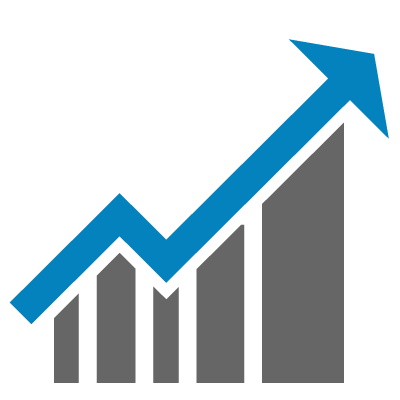Mastering the Future: 15 Forecasting Techniques for Strategic Business Planning
In today's dynamic business landscape, strategic foresight is paramount. Accurate forecasting isn't just beneficial; it's essential for survival and growth. This article explores fifteen powerful forecasting techniques that empower businesses to make informed decisions, optimize resource allocation, and outmaneuver the competition. These methods, ranging from classic statistical analysis to cutting-edge AI, provide a comprehensive toolkit for navigating uncertainty and shaping a prosperous future.
1. Time Series Analysis: Unveiling Patterns in Historical Data
Time series analysis leverages historical data to identify recurring patterns and trends. For instance, a retailer can analyze past sales data for seasonal fluctuations or holiday-specific peaks, extrapolating these insights to predict future demand. This technique provides a solid foundation for short-term and medium-term forecasting.
2. Market Research: Understanding Consumer Needs and Competitive Landscapes
Thorough market research is indispensable for accurate forecasting. Gathering data on consumer preferences, emerging trends, and competitor activities provides a crucial contextual understanding. This allows businesses to anticipate shifts in demand and proactively adjust their strategies to maintain a competitive edge.
3. Delphi Method: Harnessing Collective Expert Wisdom
The Delphi method aggregates expert opinions through iterative questionnaires and feedback rounds. By synthesizing diverse perspectives and minimizing individual biases, this approach enhances forecast accuracy and identifies potential blind spots often overlooked in individual assessments.
4. Scenario Analysis: Planning for Multiple Futures
Scenario analysis involves constructing multiple plausible future scenarios based on varying assumptions and key variables. For example, a manufacturing company might model the impact of fluctuating raw material prices or labor costs on its profitability. This proactive approach builds resilience by preparing for a range of potential outcomes.
5. Regression Analysis: Quantifying Relationships Between Variables
Regression analysis uses statistical techniques to uncover relationships between variables. Businesses can analyze historical data to understand how changes in one factor (e.g., marketing spend) influence another (e.g., sales revenue). This allows for data-driven predictions and improved decision-making.
6. Sales Funnel Analysis: Optimizing the Customer Journey
Analyzing the stages of the sales funnel – from initial contact to conversion – provides insights into potential bottlenecks and areas for improvement. Identifying and addressing these limitations can significantly boost sales forecasts and improve overall efficiency.
7. Customer Surveys: Gathering Direct Feedback
Directly soliciting customer feedback through surveys provides invaluable insights into their needs, preferences, and satisfaction levels. This real-time data allows businesses to accurately forecast customer behavior, tailor products and services, and build stronger customer relationships.
8. Econometric Models: Integrating Economic Factors
Econometric models combine economic data with statistical analysis to forecast the impact of macroeconomic factors on business performance. For example, a hotel chain might utilize this approach to anticipate the effects of interest rate changes on occupancy rates.
9. Trend Analysis: Identifying Long-Term Patterns
Trend analysis focuses on long-term patterns to predict future performance. A technology company might examine the growth trajectory of smartphone adoption to forecast the demand for its products over the coming years. This provides a crucial perspective for long-term strategic planning.
10. Technological Forecasting: Anticipating Technological Disruptions
Staying informed about technological advancements and trends is crucial for anticipating industry shifts and disruptions. E-commerce businesses, for instance, must consider the impact of AI or blockchain technology on their operational models and future development.
11. Judgmental Forecasting: Leveraging Internal Expertise
Judgmental forecasting harnesses the knowledge and intuition of experienced individuals within the organization. Combining expert opinions from managers and employees can add valuable qualitative insights to quantitative data, leading to more comprehensive and nuanced forecasts.
12. Leading Indicators: Identifying Early Warning Signals
Leading indicators are economic or industry-specific variables that precede changes in other key metrics. For example, housing starts can serve as a leading indicator for the furniture industry, signaling future demand for home furnishings.
13. Monte Carlo Simulation: Modeling Uncertainty and Risk
Monte Carlo simulation employs multiple iterations to model uncertainty and assess the likelihood of various outcomes. This probabilistic approach is particularly valuable in volatile markets, offering a comprehensive view of potential risks and opportunities.
14. Artificial Intelligence and Machine Learning: Leveraging Data-Driven Insights
Advances in AI and machine learning enable businesses to leverage massive datasets for highly accurate forecasting. Ride-sharing companies, for example, utilize AI algorithms to predict demand patterns and optimize driver allocation in real-time.
15. Sales Pipeline Analysis: Tracking Revenue and Identifying Bottlenecks
Analyzing the sales pipeline provides a granular view of potential revenue streams and highlights potential bottlenecks. Optimizing the sales process based on this data allows businesses to improve forecasting accuracy and enhance overall performance.
In conclusion, incorporating diverse forecasting techniques is crucial for effective business planning and strategic management. By leveraging these tools, businesses can navigate uncertainty, seize opportunities, and establish a sustainable competitive advantage. What forecasting methods have proven most effective in your business experience? Share your insights in the comments below!
```








No comments yet. Be the first to share your thoughts!